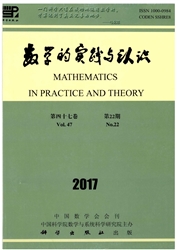

 中文摘要:
中文摘要:
利用dmey小波变换、db4小波变换将柳江年径流总量及年最大径流量时间序列分别分解为不同尺度的频率信号,再使用传统时间序列分析方法对径流分解的频率信号分别设置参数并进行预测,最后利用小波逆变换对预测结果进行重构,以此建立年径流总量、年最大径流量预测模型.与只采用传统的时间序列预测模型对比,联合了小波变换的方法均获得更精确的预报结果.计算结果表明将小波变换运用于径流时间序列的预测能有效提高径流变化趋势预测的准确率,预报的稳定性以及精确度均能明显改善.
 英文摘要:
英文摘要:
Using dmey wavelet transformation and db4 wavelet transformation, two time series of the annual total runoff and the annual maximum runoff of Liujiang River are decomposed into several parts with different scales of frequency respectively. Then the future values of these sub - series are forecasted by using traditional forecasting models, in which the process, the parameters are set separately according to the features of each subpart of the runoff time series to obtain better predicting results. In the final stage, through the inverse dmey wave- let transformation and the inverse db4 wavelet transformation, using the predicted results of the subparts, future behavior of the runoff series is reconstructed. The calculation results show that the presented methods are superior to the traditional models in the accuracy of runoff change trend forecast, stability and the prediction precision of the models to use wavelet transform in runoff time series prediction.
 同期刊论文项目
同期刊论文项目
 同项目期刊论文
同项目期刊论文
 Evolving Neural Network Using Hybrid Genetic Algorithm and Simulated Annealing for Rainfall-Runoff F
Evolving Neural Network Using Hybrid Genetic Algorithm and Simulated Annealing for Rainfall-Runoff F EvolvingRBF neural networks for rainfall prediction using hybrid particle swarmoptimization and gene
EvolvingRBF neural networks for rainfall prediction using hybrid particle swarmoptimization and gene Hybrid of Genetic Algorithmand Simulated Annealing for Support Vector Regression Optimization inRain
Hybrid of Genetic Algorithmand Simulated Annealing for Support Vector Regression Optimization inRain 期刊信息
期刊信息
